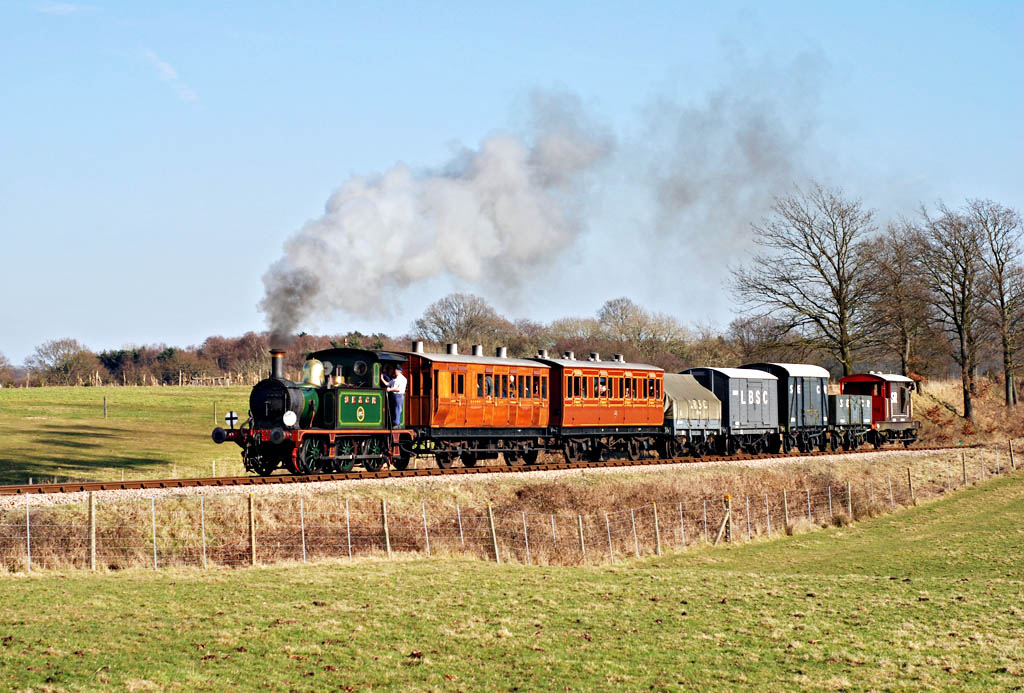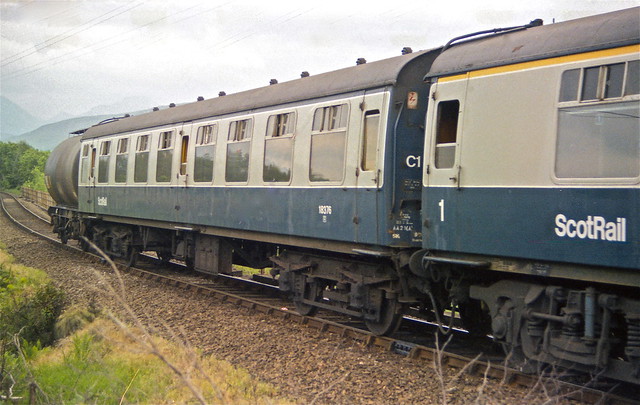Install the app
How to install the app on iOS
Follow along with the video below to see how to install our site as a web app on your home screen.
Note: This feature may not be available in some browsers.
You are using an out of date browser. It may not display this or other websites correctly.
You should upgrade or use an alternative browser.
You should upgrade or use an alternative browser.
So you think you know about Trains? - Pt 2
- Thread starter ZecMurphy
- Start date
ZecMurphy
Community Assistant
The functions of the 3 valves on the water gauge glasses on a steam locomotive boiler are, from top to bottom, the ‘steam passage’ valve, the ‘water passage’ valve, and the ‘blowthrough’ valve. The ‘steam passage’ valve is used to prevent steam from entering the top of the gauge glass. The ‘water passage’ valve is used to prevent water from entering the bottom of the gauge glass. The blow through valve is used to ‘vent’ the water/steam from the gauge glass to atmosphere, so as to test the ‘water passage’ and ‘steam passage’ are clear (either on it’s own, or by opening/closing a combination of the steam and water passage valves).last week's question said:What are the functions of the 3 valves on the water gauge glasses, on a steam locomotive’s boiler (note, 2 of these valves may be contained in a single valve on some locomotives)?
This weeks question:
What is the purpose of the ‘cylinder cocks’ on a steam locomotive?
Rio_Grande_Steam
New member
The cylinder cocks' purpose is to eject condensed water from the cylinders so that the uncompressable water can't cause any damage to the cylinder wall, head or piston.
ZecMurphy
Community Assistant
The purpose of the ‘cylinder cocks’ on a steam locomotive is to release condensation (water) from the cylinders. As water cannot be compressed, accumulated water can damage the cylinders if not released.last week's question said:What is the purpose of the ‘cylinder cocks’ on a steam locomotive?
This weeks question:
What type of train does the term ‘mixed train’ refer to?
Historically in the US, a "mixed train" was one which carried both passengers and freight. In contemporary US railroading, the term is sometimes used to designate a freight train containging more than one type of commodity, such as grain, plastic pellets, heavy equipment, and chemicals, as distinguished from a train which in which all (or in the case of certain hazardous materials which require buffer cars between the cars containing hazardous materials, and the locomotive(s), almost all) of the cars contain the same commodity. Automobiles, coal, crude oil, and during the harvest season on some routes, grain, are commodities often carried in trains of the same commodity. Even though intermodal trains are technically loaded with containers or trailers carrying mixed freight, this is often overlooked by fans who consider the loads to be the containers.
ns
ns
In the UK, a "mixed train" was one carrying both passengers and freight.
Here's a (re-created for a photo charter) pre- WW1 train on the Bluebell Railway -

The "first generation" DMUs were designed with conventional buffers and drawgear to enable them to take over mixed train working by hauling vans, although this was not widespread. This is a 1970 view

Such workings continued until 1992, with fuel oil deliveries to Mallaig carried on the back of the passenger trains.

Mixed Working HR scan by Deepgreen2009, on Flickr
also in this picture here(sorry, sharing disabled)
https://flic.kr/p/eXhzRJ
This was the last mixed train working in the UK, and continued until the early 1990s, when loco-hauled trains were replaced with "Sprinter" DMUs. These "2nd generation" DMUs, unlike the 1st-gen, do not have buffers/drawgear, so could not haul wagons. The Mallaig fuel oil deliveries continued for a while, with a class 37 loco hauling just a single wagon, until the traffic was lost to road.
Here's a (re-created for a photo charter) pre- WW1 train on the Bluebell Railway -

The "first generation" DMUs were designed with conventional buffers and drawgear to enable them to take over mixed train working by hauling vans, although this was not widespread. This is a 1970 view

Such workings continued until 1992, with fuel oil deliveries to Mallaig carried on the back of the passenger trains.

Mixed Working HR scan by Deepgreen2009, on Flickr
also in this picture here(sorry, sharing disabled)
https://flic.kr/p/eXhzRJ
This was the last mixed train working in the UK, and continued until the early 1990s, when loco-hauled trains were replaced with "Sprinter" DMUs. These "2nd generation" DMUs, unlike the 1st-gen, do not have buffers/drawgear, so could not haul wagons. The Mallaig fuel oil deliveries continued for a while, with a class 37 loco hauling just a single wagon, until the traffic was lost to road.
Last edited:
Generally a mixed train in America or Canada was an assortment of various freights with a passenger coach on the end. On most shortlines this was a combine, or combination bagge passenger coach. On some lines there was a seperate bagge car and coach for passengers and parcels. A well known mixed train was on the Moscow, Camden, & San Augustine with a wooden open platform combine on a lumber and general goods train led by steam until 1965 and diesel until 1973.
Saturnr
Saturnr
ZecMurphy
Community Assistant
The term ‘mixed train’ refers to a train that has both passenger and freight vehicles on it. Generally used on smaller lines where a dedicated passenger service was not viable, but could be achieved by attaching passenger carriages to the back of the train.last week's question said:What type of train does the term ‘mixed train’ refer to?
This weeks question:
What is Australia’s most southern operating railway?
judahGrice
Retired Trainz User
I believe that it's the Ida Bay Railway
Last edited:
ZecMurphy
Community Assistant
Australia’s most southern operating railway is the Ida Bay Railway in southern Tasmania, now being operated as a tourist railway.last week's question said:What is Australia’s most southern operating railway?
This weeks question:
What is the purpose of a ‘snifter valve’ on a steam locomotive?
ZecMurphy
Community Assistant
The purpose of a ‘snifter valve’ on a steam locomotive is to prevent a vacuum forming when the locomotive is coasting, as well as to permit a small amount of steam to pass through the steam chest to help keep the cylinders warm.last week's question said:What is the purpose of a ‘snifter valve’ on a steam locomotive?
This weeks question:
Which steam locomotive was used in the ACE3000 trials on the Chessie System in the 1980s?
Which steam locomotive was used in the ACE3000 trials on the Chessie System in the 1980s?
Here's the answer:
http://forums.auran.com/trainz/showthread.php?118376-K-amp-L-Trainz-C-amp-O-614-Megapack-NOW-AVAILABLE!
Similar threads
- Replies
- 0
- Views
- 1K
- Replies
- 76
- Views
- 17K
- Replies
- 7
- Views
- 2K
- Locked
- Replies
- 2
- Views
- 2K
